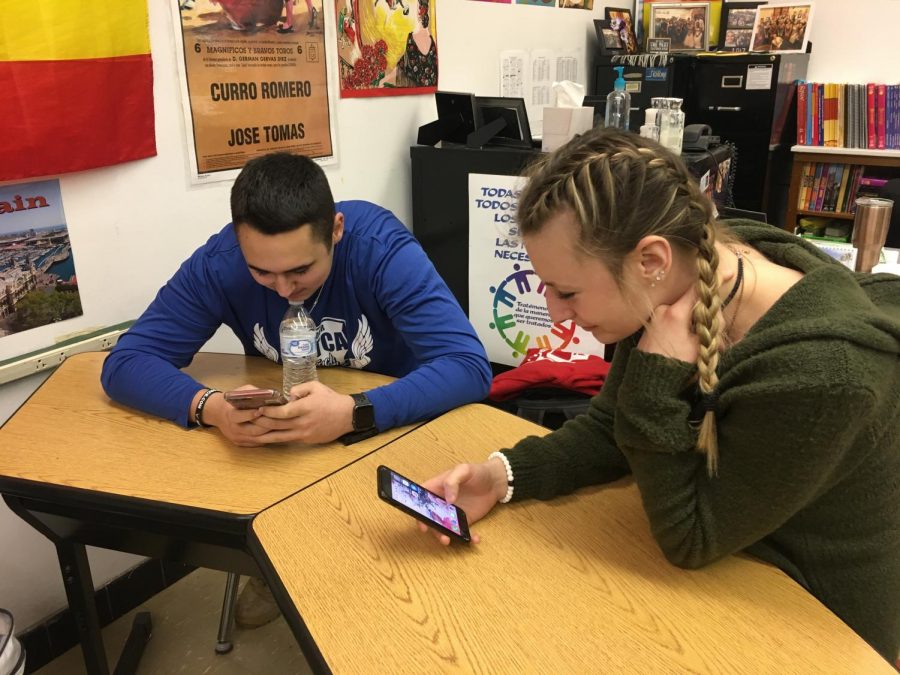Born to Isolation
Without utilization, many communication forms go unused
On average, 18-24 year olds send about 128 Short Message Service (SMS) text messages per day, according to textrequest.com. That does not take into account how many they receive. Communication is also seen through popular social media apps like Twitter, Snapchat, Instagram and Facebook. If we have so many different ways to communicate with others, why is society still lacking in communication?
Although there are several different types of communication, face-to-face communication is suffering the worst. For most people, being friends involves keeping a Snapchat streak or liking the other’s tweets. When there are problems between the two it’s easier to not respond instead of talking about the issues.
Senior Marydeth Feits uses social media to connect with friends through all platforms. Her favorite social media site is Snapchat, where she has 76 snapchat streaks with people from different schools and organizations she is apart of.
“I like communicating through Snapchat because it’s temporary messages and I enjoy taking funny pictures with the filters or cool pictures that I can share on my story or with some of my friends directly,” Feits said.
Communication blockage can affect businesses and also relationships. When there are communication problems, it can cause uncertainty and doubt. Continuing with that, teams may not reach their full potential if they are not informed on important topics they will be covering.
Think of a time when someone made a comment about another person. One of the worst things that can come from lack of communication are rumors. Poor communication is the reason for the saying, “I heard it from the grapevine.” False information can strain relationships, yet it continues to occur.
Communications teacher, Bradley Baldwin, believes that communication can improve with practice over time. The more face-to-face communication and more interaction, the better people can become. He also feels that the final stage of the communication process is forgotten, where there is no response after a text message has been sent or feedback of any kind during the communication process.
“Communication is so important because it helps us get a message across to our audience so there are no misunderstandings.” Baldwin said.
In a classroom, if a teacher does not properly explain an assignment, students will not know how to complete it, and some might not even try. This can negatively affect not only their grade but also their attitude towards the class. Students will decide that the teacher doesn’t care, so they shouldn’t either.
So why is there such a lack in communication when there are so many ways to talk to others? People believe that they are born to be good communicators. They don’t practice and in turn, they don’t get better. Most people stop trying to be good at communicating and learning new things or skills for the fear of failing. There is a common, mistaken belief that good communication is common sense. There is an inaccurate assumption that others know what the person knows. Any and all of these situations can easily happen and have happened, leaving proper communication in a downward spiral.
Communications classes should not be taken advantage of. Speaking is an everyday thing which is almost as natural as breathing to a human. When a person is at dinner, they should put the phone down. There’s no need to talk to others on social media while there are people sitting at the same table. Call people instead of texting them. Texting can be great for not as urgent messages but can also be hard to understand. A text doesn’t show emotion like a voice can.
With that being said, no matter how advanced technology becomes, humans will always have to interact with one another. Teachers interact with students, doctors interact with patients and cashiers interact with customers. The cycle will continue, but there will be no solution until the general public uses the resources given to start a movement for better communication.



